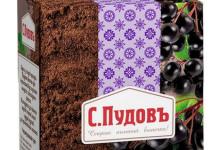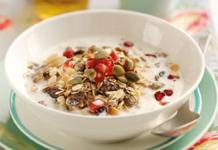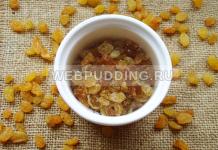It is worth starting with the fact that flour is a product obtained as a result of grinding grain crops. As a product used for cooking, it has been known to mankind for more than one millennium. Flour occupies an important place in the diet of every person and is an indispensable source of fiber, vitamins and trace elements.
This product has received the widest application for baking bread, cooking pasta, cooking and other industries related to the food industry.
There is a certain gradation of flour according to its grade and type. In our country, the most widely used wheat and rye flour. This is due primarily to the climatic conditions that are most suitable for growing these particular cereal crops. Less common are other types of flour, such as: malt, oatmeal, millet, rice, lentil, buckwheat, corn, barley, linseed and amaranth.
With regard to varieties, wheat flour is divided into: grits, premium, first grade, second grade, and wallpaper. Rye flour for: seeded, peeled and wholemeal. Let's take a closer look at the varieties of flour and their use in cooking.
The grade of flour does not mean that the purchased product is of higher or lower quality. This parameter indicates certain quality features that are most suitable for a particular culinary application.
Depending on the variety, the following characteristics change in flour: particle size, color, quantitative content of bran particles, gluten volume and ash content. Also, depending on the type of flour, the volume of its production from a conditional 100 kg of grain crops changes. The higher the grade, the lower the yield of the finished product. So from 100 kg of grain, about 10% of grains are produced, 25% of the highest grade, 70% of the first grade, 85% of the second grade and 95% of wholemeal flour.
Krupchatka- this type of flour has a creamy tint and consists of finely dispersed grains of a heterogeneous structure. Contains a lot of gluten and a low percentage of bran. As for the use in cooking, the grit has good baking properties. It is most suitable for making yeast dough, which contains a large amount of fat and sugar, for baking muffins and Easter cakes.
As for the so-called "bad" dough, the use of grains in it is not desirable. This is due to the fact that baking will get stale pretty quickly due to the poor porosity of the finished product.
Top grade- this variety differs from the previous one in its composition, which has greater uniformity and white color. It contains less gluten and proteins. The highest grade has another subspecies, referred to as extra grade flour, it is distinguished by a smaller fraction of ground grains, and it is well suited as a thickener for sauces.
Premium flour, thanks to its excellent baking properties, provides good volume during baking and fine porosity. Thus, this type of flour is suitable for yeast, shortcrust and puff pastry, as well as for the flour-based sauces and dressings mentioned above.
First grade- flour has a slight yellowish tint, soft to the touch, finely dispersed. Due to the high content of gluten, the dough prepared from it is elastic. Baked products keep their volume and shape well, and also have a pleasant taste and aroma.
Flour of this grade is optimal for baking bakery and confectionery products. In addition, it is well suited for making pancakes, pancakes, noodles, all kinds of pies and rolls. Baking from flour of the first grade stale rather slowly.
Second grade- differs from previous varieties of flour in a significant brownish tint due to the high percentage of bran.
In terms of baking qualities, this flour is most suitable for baking "bad" bakery products and white bread. The baked bread is distinguished by good splendor and porous crumb. When preparing products such as gingerbread or cookies, this flour is often mixed with rye flour.
wallpaper- for its production any soft grades of wheat are used. A characteristic feature is a rather dark color and a high content of bran.
Wholemeal flour is somewhat inferior in its baking properties to higher grades of flour, but it contains a much larger amount of useful substances, and it has a higher nutritional value. Wholemeal flour is rich in starch, iron, calcium, phosphorus, magnesium, as well as vitamins E and B. This type of flour is rarely used in cooking, it is mainly used for baking high-quality table bread.
Seeded rye flour- differs in white color, sometimes with a bluish or cream shade, has a fine dispersion, soft to the touch. It is used when baking rye bread, provides good splendor and shape retention. Often used for mixing with wheat flour.
Peeled rye flour- has a grayish-white color with a variety of shades. Due to the large amount of nutrients and minerals, as well as the low calorie content, baked bread is the most beneficial for human health. With regard to baking properties, peeled flour provides good porosity and elasticity of the baked crumb.
Rye flour- a distinctive feature is a relatively dark color with shades of gray or brown. It contains the largest amount of bran and has a fairly high nutritional value. This flour is one of the most common and is used in baking table bread.
As can be seen from the above, any housewife should not be limited to the choice of one particular type of flour. Each of them has its own strengths and weaknesses. In order for your success in the kitchen to be appreciated by others, do not be afraid to experiment.
Flour is a product obtained by grinding grain to a powder. Wheat and rye are mainly ground into flour, and barley, corn and other grain crops in much smaller quantities. Flour is obtained by grinding grain and classify it by type, type and variety.
The total weight of the flour obtained by grinding, expressed as a percentage of the weight of the grain taken for processing, with all impurities called flour output. For example, if 85 kg of flour is obtained from 100 kg of grain, then the yield is 85%; if received 72 kg, yield - 72% etc. (And I used to be mistaken and thought that this indicated percentage is the amount of grain in flour, and the rest up to 100 percent is unknown. My gross mistake).
Type of flour determined by the crop from which it is derived. There are wheat flour, rye barley, oatmeal, rice, pea, buckwheat, soy flour. Flour can be obtained from a single crop and also from a mixture of wheat and rye (wheat-rye and rye-wheat).
flour type determined by its purpose. For example, wheat flour can be produced by baking and pasta. Bread flour is produced mainly from soft wheat, pasta - from hard high-glassy. Rye flour is produced only by the bakery.
Flour grade is the main qualitative indicator of all its types and types. The type of flour is related to its yield, i.e., the amount of flour obtained from 100 kg of the original product - grain. The yield of flour is expressed as a percentage. The greater the yield of flour, the lower its grade. That is, the more coarse flour is obtained.
For the production of bread and bakery products, mainly wheat and rye flour is used.
Wheat flour
Wheat flour is produced 5 grades according to GOST 26574: "Baking wheat flour": grits, premium, first, second grades and wholemeal or 4 grades according to TU 8 RF 11-95-91 "Wheat flour" of the highest, first, second grades and wallpaper. In addition, Podolsk wheat flour is produced according to TU 8 of the RSFSR 11-42-88 and baking wheat flour "Special" according to TU 9293-003-00932169-96 of the highest and first grades.
Krupchatka (grain flour) - a high grade obtained in an amount of about 10% from vitreous wheats; consists of relatively large homogeneous particles; appreciated due to the property to swell additionally after kneading the dough.
Flour of the highest grade - soft flour of fine grinding. It is low in fiber, fat, and minerals. Its output is only 10 or 25% of the weight of the grain, depending on the type of grinding. Flour of the 1st grade is also soft flour, contains a few more frayed shells compared to premium flour, and therefore is slightly darker in color.
Flour of the 2nd grade - soft flour, contains even more worn shells. The color is darker than flour of the 1st grade.
Rye flour
Flour rye bakery produced according to GOST 7045 3 varieties- seeded, peeled and wallpaper. I've seen only peeled in stores for sale. In addition, bakery rye flour "Special" is produced according to TU RF 11-115-92. Whole flour - the main grade of rye flour, is obtained by single-grade grinding without bran selection, its yield is 95% of the grain weight.
Barley, corn, soy flour
Barley flour. Barley is processed into flour in relatively small quantities; it is also obtained as a by-product during the processing of barley into cereals (barley and barley). Barley flour in its pure form is used in everyday life for the manufacture of cakes, and in industrial baking only as an admixture to wheat and rye flour. The addition of barley flour to wheat accelerates the staleness of bread and gives it a darkish tint. I somehow mistakenly baked bread entirely on barley flour, ground it out of a bag, confusing it with rye. We ate one loaf, the second could not. :-) The taste is very peculiar - bitter in the aftertaste (and strong), sour, plus it crumbles.
Corn flour. Corn flour, as well as barley flour, is used in its pure form in the home and as an admixture to wheat flour; it, like barley, accelerates the staleness of bread.
Soy flour. Soy flour can be of the following varieties (at least it was like that in the USSR): 1) full-fat from refined, deodorized and hulled grain; 2) semi-skimmed from edible soybean meal after separation of fat from soybeans by pressing; 3) defatted from food meal after separation of fat from soybeans by extraction. Soy flour is used as an improver in the baking and pasta industry (it can be added to wheat flour in an amount of 3-5%), as well as in the confectionery industry and for making sauces.
Composite flour mixes
Flour is also used as part of composite mixtures. These are the following types and varieties of flour: varietal barley flour, varietal millet flour, varietal corn flour (coarse and fine), rice flour of the 1st grade, varietal pea flour, wheat flour with a high content of bran particles, wheat flour enriched with dietary fiber (doctoral) .
Currently, there are composite flour mixes for bakery products. Composite flour mixtures are designed to expand the range of products with an improved amino acid composition, an increased amount of macro- and microelements and vitamins.
Composite flour mixes for bread include 3 components: baking wheat flour of the 1st grade (65%), peeled rye flour (15%) and cereal (barley varietal, millet varietal or buckwheat 1st grade) (20%).
Mixes for bread consist of 2 components - wheat flour of the highest grade (89%) and cereal flour (11%).
Composite mixes for confectionery include wheat flour of the highest grade (80%) and cereal flour (20%).
Low and high grind
Grain grinding can be reduced to two main types: low and high.
At low grinding, passing the grain through millstones or rollers, they strive to immediately get flour, and at high grinding, the grain is crushed gradually and at first cereals are obtained from it, or, as they are commonly called, cereals; these grains are then cleaned, sorted by quality, and only after that they are turned into flour.
High grinding yields more flour and more fine flour than low grinding, but it is more expensive, requires more machines and uses more energy.
In the flour milling industry, low-grinding mills are called wallpaper mills, and high-grinding mills are called varietal mills.
Simple grinding
Flour sieve - for sifting without lumps of flour, powdered sugar and other bulk products.
By simple grinding, simple, or ordinary, flour is obtained.
Simple grinding can be one-time, when the grain is passed only once through the millstones and all the flour is immediately obtained, or repeated, when, after passing through the millstones or rollers, the product is sifted and the residue on the sieve is ground again, repeating such processing until the product is completely crushed and nothing will remain on the sieve.
With a single grinding without preliminary cleaning of the grain of flour, 99.5% is obtained (0.5% is due to shrinkage and mechanical losses). When grinding with cleaning, 99% of flour is obtained from grain of standard quality (0.5% is waste and 0.5% is mechanical loss and shrinkage).
Wholemeal, peeling, seeded grinding
With wallpaper grinding, we grind both rye and wheat and get wallpaper flour. Before grinding, the grain is already subjected to a more thorough cleaning of impurities, among the machines there is always a scouring machine (otherwise scouring).
Baked bread made from rye flour.
Peeling grind only rye. It differs from wholemeal grinding in that grinding is carried out on a larger number of roller systems, and also in that bran (residues on the sieves of the last sifting) is selected during this grinding in an amount of about 10%. The flour yield is 87%. Peeled flour is finer than wholemeal flour, and whiter, since it contains fewer bran particles.
Seeded grinding is carried out more carefully than peeling. Bran is screened out about 20%; rye flour receive about 80-78%. If it is produced in one variety, it is called screening flour. When broken down into two grades, the best grade (about 63%) is called seed flour, and the rest is fodder flour. You can take only 15% of pure flour, then the remaining 65% are obtained as peeled flour. Previously, we received even finer rye flour called peklevanny; it was obtained either during the wholemeal grinding of rye, sifting a small amount (10%) of flour from the first systems, or by special grinding (yield 43%).
High (varietal) grinding
Preparation of grain for high (varietal) grinding is carried out according to a more complex scheme compared to low. The process of obtaining flour usually consists of four parts: a) coarse crushing (otherwise shreds) in order to obtain grains; b) sorting and cleaning grains; c) grinding grains; d) grinding bran.
Dranye is produced on cut rollers (they are placed in 5-8 systems), grinding is done on smooth rollers (they are placed one and a half times more than torn ones, that is, 8-12 systems). Grains are cleaned on wakes and sieves. White grains without shells, as heavier ones, are separated from dark and variegated shells with particles when winnowing. Often, the so-called faceting of grains is also added to cleaning, that is, crushing them on rollers, followed by sifting and winnowing. The final processing of bran is carried out on brush machines and then on centrifuges, while obtaining an additional 2-2.5% flour.
As a result of the high grinding process, the following are obtained: 1) flour from each system of rollers (torn and grinding), 2) large and small bran, 3) grain cleaning waste (feed and non-feed).
Unusual types of flour on sale
Today, you can buy a variety of flours in stores: from spelled and buckwheat to hemp and amaranth. Including in online stores without leaving home. For example:

Bird cherry flour gives baked goods a pronounced taste and aroma of almonds with a chocolate color. Used for baking pies, cakes, cupcakes and other products; for making drinks. Bird cherry flour can be added when baking bread.

Rice flour gives baked goods a delicate crumbly texture. It is a source of biologically valuable protein, vitamins and microelements.

Amaranth flour in combination with wheat flour is used for all types of homemade baking: muffins, cupcakes, cookies, pies, cakes, bread, buns and other products. Amaranth seed flour gives baked goods a delicate nutty flavor.

Wheat Whole Grain Wheat Flour is an ideal product for people on a diet and a healthy diet.

Almond flour is made from blanched (peeled) almonds. Gives a delicious nutty flavor and delicate aroma to homemade cakes. Used to make many desserts.

Corn flour gives baked goods a crumbly structure and a golden hue. Increases the biological value of products, enriches with vitamins and microelements.

Buckwheat flour gives baked goods a unique nutty flavor and aroma. It is a valuable source of protein, fiber and essential amino acids.

Biologically produced flour from whole grains Zito "Natura Bio" is not only a taste, but also all the benefits of whole grains.

Spelled flour has high dietary characteristics. It is enriched with fiber, amino acids, vitamins and protein.

Chickpea flour is used to make various types of pastries, sauces and confectionery. It is rich in nutrients and trace elements.

Compass Health hemp flour (as well as hemp bran).

Garnets Flour Whole grain gluten-free buckwheat (and other varieties).
Good housewives always choose premium flour in the store. From this tender flour, resembling expensive powder, the most delicious and magnificent pastries are obtained. But our home cooks do not know that, choosing the best flour, they, pardon the expression, put a pig on their loved ones. Because premium flour is devoid of the most useful elements - impurities, grain shells, etc., which have a positive effect on the cardiovascular and digestive systems. Today, Alexander Telegin, candidate of medical sciences, talks about this.
Mr. Filippov, the owner of the famous Filippovskaya bakery on Tverskaya Street, who knew a lot about this issue, used to say that flour is even more important for good bread than a skilled baker. So let's take a look at flour.
Over the centuries, this product has changed a lot. And, ironically, not for the better. They always wanted to make it whiter, smaller and cleaner. After all, the first flour was crushed in mortars or ground between stones, and it inevitably turned out to be coarse, with particles of different sizes and colors. Darker and larger ones were obtained from the shells of the grain and its germ, and white ones were obtained from the endosperm. (see picture). Then the mills began to grind better, but still not perfect. Gradually, people learned to make pure white flour with the smallest “specks of dust”. To do this, they got rid of the grain shells and the germ, losing with them the most useful substances - fiber and other dietary fibers, proteins, vitamins, minerals. Expensive white bread made from such flour was considered not only the most prestigious, but also useful. It was not until the end of the 20th century that it was proved that the coarser the flour, the more shells and germ left in it, the more useful it is. And white refined flour is the most harmful.
To understand flour, its types and varieties, you need to have an idea of how the grain is arranged. Why? The grade of flour is directly related to its anatomy. After all, in the process of creating flour, grain is not just crushed, a significant part of it goes to waste or for processing - for other purposes. For example, all wheat premium flour only made from endosperm (Fig. G). So strangely, professionals call the huge food reserves needed for the germination of the embryo. They account for approximately 80 percent of each grain. And almost all of this is starch, the protein content in the endosperm is about 10%, and other substances - fats, vitamins, minerals - are generally very small. Myself embryo (in Fig. E)- this is a small formation at the "south pole" of the grain. It is much smaller than its food reserves, but it has a lot of all sorts of useful things - good proteins, vitamins, lipids, minerals and no starch. All grains are covered (in Fig. A, B, C, D), from which, for the most part, they get rid of during the manufacture of flour. They are present only in the wallpaper and partially in the peeled flour and in very small quantities - in the flour of the 1st and 2nd grades. These shells are made up of useful substances - fiber, dietary fiber and minerals.
CHILDREN OF THE GRAIN OF WHEAT
Despite the presence in the sale of different types of flour, wheat is still the most bought. And its range is much larger than flour from other cereals. It comes in five grades - the highest, first and second, and there is also wallpaper (the so-called third grade) and grit (a special grade).
Premium flour made not just from the endosperm, but mainly from its central part. It is the whitest and the finest (fine) grinding (particle size 30-40 microns). Bread from it is also obtained with the whitest crumb, airy and porous. This is due to the fact that the highest grade flour has the least “impurities” from other parts of the grain. This is evidenced by such an indicator as ash content.
Flour of the first grade larger, the size of its particles is from 40 to 60 microns. It can be from pure white to white with a yellowish or slightly grayish tint. This is due to the very small amount of crushed grain shells - they are darker than the endosperm. The ash content of such flour is one and a half times higher - 0.75%. German flour T812 (ash content 0.812) and Italian flour “000” (ash content 0.65%) are close to it. The crumb of bread from such flour turns out from white to grayish. And the taste is highly dependent on the skill of the baker and other ingredients used.
Flour of the second grade even rougher and darker. Its color ranges from light with a yellowish tinge to dark gray and even brown. It has more shells, and its ash content is 1.1-1.2%. Of course, it is richer in vitamins and minerals, but it is difficult to bake something appetizing from it alone. You should always add flour of a higher grade to it.
Wholemeal flour (third grade)- this is not only endosperm, but almost completely crushed grain. It has both shells and an embryo. Its particles, to put it mildly, are not the same in size: the smallest - 30-40 microns, like that of premium flour, the largest - 2 times larger, up to 60 microns. Bread only from such flour is also rarely made - it turns out to be harsh and non-porous. In order to make something not only healthy, but also tasty from wallpaper flour, it is diluted with other varieties and even flour from other cereals.
Krupchatka (a special kind of flour). It is very conditionally suitable for bread, it is better to make something rich or noodles, dumplings and other dumplings from it. This is a very coarse flour from a mixture of hard and soft vitreous wheat. It does not absorb much water, but does not become liquid with long kneading and fermentation. Buy grits, unlike other varieties, is not very simple.
concept ash content used by millers and confectioners in many countries of the world. The term comes from the word "ash" and that's what it means. If the flour is burned, then a little bit of ash will remain - this fireproof residue is formed by minerals. And since most of them are in shells, then the higher the ash content, the lower the grade of flour. Therefore, in the flour of the highest grade, it is minimal - no more than 0.55%. We rarely give this indicator on flour packaging, but on imported flour, which is widely sold in our country, it is always present. For example, on products from Germany you can often see such a designation - T 550. These figures correspond to an ash content of 0.55%, which means that this flour is similar to our premium. Italian flour, which is often sold with us, has its own “hieroglyphs”. For example, “0000” refers to premium flour. Fewer zeros indicate a higher ash content and therefore a lower grade. Remember two more main Italian flour terms: Farina (Farina)- flour from soft varieties of wheat, and Semolina (Semolina)- from hard. They are always indicated on the packaging, and this is important. The first type of flour is better suited for bread and homemade cakes, the second - for pasta and pizza.
RYE IS OUR CULTURE
We use rye flour much more than in the West. And until recently, almost all of it was used in industry - for baking black bread. But today, rye bakery is increasingly and more persistently “leaking” into our kitchens. It turns out that not only black and gray bread can be made from it, but also cookies, pancakes, pancakes, pies, flat cakes and other goodies. True, it is wrong to use it alone. Usually high-grade wheat flour is added to it.
Rye baking flour, in accordance with the new GOST R 52809, adopted in 2007, is of four varieties. But not the highest, 1st, 2nd and 3rd, as you might think. The names of varieties sound different - seeded, wallpaper, peeled and special.
Whole rye flour, as well as a similar wheat, almost whole grain. It has all the components of the grain. It is gray in color, with inclusions of darker shells. Its ash content is as much as 2%.
Peeled bakery from rye contains fewer grain shells (some of them are peeled off). And its color is grayish-white or grayish-cream, but even against this background tiny particles of shells come across. Its ash content is 1.5%.
Seeded rye flour more tender. By sieving, fragments of shells and other particles of grain were removed from it. Its color is white with a cream or grayish tinge. There is as much ash in it as in wheat flour of the first grade, 0.75%.
Special rye flour- unsown, it occupies, as it were, an intermediate position between seeded and peeled. This is evidenced by its ash content - 1.15%.
SECOND YOUTH OF BARLEY
Barley flour was once super popular. But this is not due to any of its special baking properties. Rather, on the contrary, such bread is not as airy and soft as we like, and it stale very quickly. It was just cheap bread. For the same reason, far from everyone used to eat white bread, the flour of higher grades necessary for it was expensive. At one time, barley flour was simply forgotten, but now it can be bought more and more often. Why? It is good to add it to the flour of other cereals. For example, pancakes with its use are wonderful. On the other hand, it contains the so-called beta-glucan, which lowers cholesterol and protects blood vessels and the heart.
Barley flour is made in two varieties - wholemeal or seeded. The first is almost whole grain, like other types of wholemeal flour, and in the production of the second, the bran (grain shells) is removed.
BUCKWHEAT, OATS AND MILLET IS NOT ONLY porridge
Buckwheat porridge is very useful, flour from it too. Therefore, even officially it is called dietary flour. They make it like wallpaper flour and only one variety. It is difficult to make bread from only buckwheat, but it goes well as an addition to any bread, pancakes, cookies, dumplings and almost everything that is made from dough.
By the same principle, you can use flour from oats and millet. By the way, for some reason, the latter, like porridge, is called millet, and not millet.
THERE IS NO PANCAKE FLOUR
Strictly speaking, the term "pancake flour" is a misnomer: it's not flour, but a mixture for making pancakes. Why do we call ready-made products for muffins, cookies or bread mixtures, and for pancakes - flour? Flour is only one of the components of this product. And when buying it, it is useful to pay attention to the composition. There you can find components that you hardly use at home when cooking pancakes and pancakes. For example, I saw “Classic” pancake flour for sale, which contained not only wheat, but also soy flour. It plays about the same role in pancakes as egg powder or milk powder. And of course, these components are better. Therefore, carefully read the composition of pancake mixes, choosing the most natural ones. Try not to have food additives that are used in industry. Better yet, make pancakes simply from flour, adding milk, an egg, soda and other proven ingredients to it, and not soy powder.
WHAT SHOULD BE INDICATED ON THE PACKAGING OF FLOUR AND FLOUR MIXTURES
Few people do not like various buns, cakes, pies and just a store-bought loaf, on which it is enough to put a piece of butter - and you can’t imagine the best sandwich for tea drinking. Although the life of every person is inextricably linked with bakery products, few people think what benefits this product brings to the body and what are the differences between the most popular types of flour - wheat and rye.
Rye flour - composition, properties
A few centuries ago, bread was baked from rye flour, since rye was a more frost-resistant cereal crop and it was from it that hearty bread was baked, which remained soft and tasty for a long time.
Rye flour
Rye flour has practically no fat (1.7 g per 100 g) and contains a lot of vegetable protein (8.9 g per 100 g). All useful substances of the product are transferred to flour products baked from it, namely vitamins B and E, minerals calcium, potassium, phosphorus and magnesium. Although the composition of useful substances is not as large as that of other products, but at the same time, products made from rye flour provide their necessary minimum. So, vitamin B 1 ensures the health of the nervous system and supports metabolism. Without vitamin B 2, it is impossible to maintain the health of the thyroid gland, and the state of the reproductive system also depends on it.
Folic acid contained in rye bread is the No. 1 vitamin for pregnant women of the first trimester, since its sufficient amount in the diet ensures the formation and normal development of the fetal nervous system. Peeled rye flour most often goes on sale; it retains about 60% of the useful substances of the grain. However, in production, for the preparation of gingerbread, gray and black bread, pecked rye flour is used, unfortunately, it is the least useful of all types of rye flour.
In order to obtain white flour from wheat grain, it is highly processed, which, unfortunately, most of the nutrients do not get into the flour, becoming waste products. In terms of nutritional value, wheat flour is ideal for baking a variety of buns, pies and cakes as it contains the essential gluten and starch that make the dough elastic and easy to form. Without wheat flour, perhaps, it is impossible to cook any bakery product, even the dough for rye bread necessarily contains wheat flour. Wheat flour contains small amounts of vitamins B, PP, H and E.
Wheat flour
The flour also contains macro and microelements - iron, boron, selenium, zinc, titanium, aluminum and nickel. As flour is produced, the vitamin composition is present only in the second grade and in coarse flour, there are no useful substances in the premium flour, it contains carbohydrates, proteins, gluten and fiber.

The benefit of white flour is that it speeds up metabolism, stimulates the brain, thanks to the inclusion of wheat flour in the diet, the appearance of stones in the gallbladder is prevented. The product is useful in the treatment of bronchitis and asthma, fights free radicals in the body. At the same time, one should not forget that with a minimum of nutrients, white flour is a very high-calorie product, so the abuse of flour products can lead to obesity and diseases of the cardiovascular system.
Two types of flour are used in baking activities, there are varieties of bread that are baked using both rye and wheat flour, a lot depends on the degree of flour processing, most often they use the most refined flour so that it has enough gluten to make the dough fluffy, and the product is porous and soft. The calorie content of the products is almost the same (340 and 325 kcal), the composition of grits (unrefined wheat flour) and peeled rye flour is almost the same. They contain vitamins of groups B, PP, H and E, in addition, the composition of the flour of these varieties includes calcium, potassium, magnesium and phosphorus necessary for the body. Rye and wheat flour contain a lot of carbohydrates, they do not contain fat, and they also contain vegetable protein.
Products contain fiber in the same amount, which acts in the body like a “broom” sweeping out toxins, toxins, decay products and other harmful substances from the intestines. Also, two types of flour are united by the fact that one of the important conditions for their storage is low humidity, since it quickly deteriorates. Also, wheat and rye flour is quickly affected by pests.
The products also have some significant differences, which are as follows.
- The composition of flour products. Speaking about the fact that the composition of nutrients in products is almost the same, one should not forget that in baking activities, mainly wheat flour of the highest grades is used, which, after processing, loses all useful properties, in fact becoming a source of empty calories. Rye flour, despite the degree of purification, remains a source of vitamins and minerals, it has a low glycemic index, therefore it does not cause a jump in blood sugar and insulin production, due to which excess weight is added.
- bakery properties. A feature of wheat flour is the presence of gluten in it, due to which the dough becomes elastic and it is easy to mold pies, cookies and buns from it. Wheat flour has a high gas-forming ability, due to which carbon dioxide is formed during the fermentation of the dough. Therefore, baking from wheat flour is lush and porous. Rye flour is not capable of forming gluten, its constituent enzymes break down starch, therefore wheat flour should be added to the dough in addition to it, only then the flour product will turn out to be the desired shape, its crumb will be elastic.
vchemraznica.ru
Flour: what are the types and varieties
A product that is hard to do without. An ingredient with which we prepare a huge number of dishes. But what do we know about flour ... What and for what it is better to use. Expand your culinary horizons.
Flour is a product that is the result of grinding grain to a powder state. More popular types of flour: wheat and rye. And they also distinguish between corn, oatmeal, rice, buckwheat and some others. As already noted, flour is the result of grinding grain, and depending on what kind of grinding it is, it is customary to classify flour by type and grade.
The process of grinding grain is accompanied by such a concept as the yield of flour. This means what the total weight of the flour turned out to be relative to the grain originally taken. For example, if 72% of flour was obtained from 100 kg of grain taken, then the yield is 72%. With regard to TYPES of flour, this classification is based on the intended use of the product. So, flour can be used for baking bread or for making pasta. Bread flour is mainly made from soft wheat, while pasta flour is made from durum.
Now let's talk about the GRADE of flour. The varieties differ from each other in the degree of grinding of grain and the yield of flour.
WHEAT FLOUR comes in 5 varieties:
grit,
and wallpaper.
Krupchatka is the result of grinding special varieties of wheat and consists of fairly large homogeneous particles.
PREMIUM FLOUR - the most refined type of grain. It is characterized by its softness and fine grinding. It is produced only from the internal contents of the grain. Flour contains little fiber and minerals. But due to its good baking properties, products made from it have a good volume and finely developed porosity. 1st GRADE FLOUR is also soft, but contains a small amount of frayed shells and is slightly darker than premium flour. It contains a lot of gluten, so the dough from it is elastic, and the finished products are of good volume and shape. 2nd GRADE FLOUR - soft, but there are more worn shells than in 1st grade flour and darker. It contains up to 8% bran WALLPAPER FLOUR - the result of the largest grinding. It is characterized by the content of all components of the grain. Its color is grey-cream. This flour is made from soft wheat varieties. It has 2 times more bran than second grade flour. In cooking, it is mainly used for baking table breads.
RYE FLOUR By analogy with wheat, the difference between varieties is in the degree of grinding, flour yield and content of bran particles. The less bran particles in rye flour, the lighter it is.
But unlike wheat, rye flour proteins do not form gluten. The dough from it turns out sticky, and the bread itself is more dense.
www.joinus.pro
The difference between premium flour and first grade flour
Flour, which is sold in stores, most often belongs to the highest or first grade. What is the essence of such a classification?
This product is quite easy to identify by touch. The fact is that if you take premium flour and rub it between your palms or fingers, it will spread over their surface in a very thin layer, like powder. This is due to the fact that there are practically no grains in the corresponding product. The particle size of premium flour does not exceed 40 microns. In the structure of this product there is almost no fiber, as well as elements of grain shells.
Premium flour - white, sometimes with a creamy tint. This product is ideal for baking bread, as it gives it a large volume and uniform porosity. Premium flour is also used in the manufacture of various types of dough, as an element of sauces and dressings.
It should be noted that baking based on the product in question has a high calorie content. If you eat a large amount of bread and buns based on premium flour, you can provoke the appearance of excess weight. In addition, the gluten contained in flour slows down digestion, as a result of which the body does not absorb vitamins very efficiently, which, however, are contained in a significant amount in the product in question.
Bakery products made from premium flour get stale rather quickly. Therefore, it is advisable to eat them as fresh as possible.

The composition of the product in question also contains a fairly large percentage of gluten. This predetermines the possibility of making very elastic dough based on the first grade flour, from which it is possible to bake voluminous bread and buns of a stable shape.
The palatability of bakery products based on the considered flour is also very high. It is recommended to use this product for baking lean types of products - for example, pies, pancakes, dumplings, some types of pasta.
Bakery products from this type of flour are slightly less caloric and stale more slowly than products from a premium product.
The fineness of premium flour is approximately one and a half to two times higher than the corresponding indicator characterizing the product of the first grade. The ash content of premium flour is approximately 0.55%, while the first grade is about 0.75%.
- in color;
- in the limiting particle size;
- in size;
- in ash content;
- in calories;
- in application;
- influencing the staleness of bakery products.
There are quite a few parameters for comparing the products in question. Let's try to more clearly display what is the difference between premium flour and first grade flour in a small table.
Back to content
Table
| Premium flour | Flour of the first grade |
| What do they have in common? | |
| Both varieties of flour are soft to the touch, contain almost no elements of grain shells. | |
| What is the difference between them? | |
| Has a white color, usually with a creamy tint | Has a white color, usually with a yellow tinge |
| Limit particle size - 40 microns | Limit particle size - 60 microns |
| Has half the size | Has twice the size |
| Has an ash content of about 0.55% | Has an ash content of about 0.75% |
| More calories | Less calorie |
| Especially good for baking bread, pastries | Particularly good for making lean products |
| Bread and buns based on premium flour stale faster | Bread and buns based on flour of the first grade stale more slowly |
thedifference.ru
Differences in the types of flour. Bread - An-Nisa - Muslim Women's Portal
The type of flour is determined by the type of grinding: the smaller the grinding, the higher the grade of flour. But flour of the highest grade is not at all the most useful. When grinding most cereals, the outer parts of the grain (the shells that turn into bran and the germ) are removed, and flour is obtained from the remaining starchy part of the grain - the endosperm. If these components are completely removed, the highest grade flour is obtained. And then, depending on the content of grain shells in flour (bran), flour of the first, second grades, etc. is produced.
Wheat, rye, other cereals, and cereals are most beneficial when used as a whole grain, when they contain the highest amounts of B vitamins, minerals, fiber, and protein.
Most of the fiber, vegetable fats and vitamins E and group B, as well as iron, and a significant part of the protein are concentrated in the shells and the germ of the grain at its base. This explains the difference in the nutritional value of different types of flour and bread made from them. Just imagine the difference - in the flour of the highest grade there is about 10% protein, and the 2nd grade - 12%, 6 times more dietary fiber and 2-3 times more vitamins and minerals.
Wheat flour of the highest grade is used for the preparation of rich flour and confectionery products, grade 1 - for pasta and bread products. Wholemeal flour is mainly used for baking bread.
Don't take the bread off the table!
Bread occupies a special place in the diet of both healthy and sick people. The high fiber content of bran or whole grain breads can help prevent gastrointestinal, pancreatic, and gallbladder dysfunction and possibly prevent some types of cancer. The complex carbohydrates found in bread lower blood cholesterol levels and help fight diabetes.
In addition to vitamins E, group B, bread contains a number of minerals - potassium, calcium, magnesium, sodium, phosphorus, iron. Bread is an important source of carbohydrates and vegetable protein. White bread is more caloric (200-250 kcal per 100 g) and contains less valuable substances (the essential amino acid lysine, vitamins, manganese, zinc, copper, dietary fiber) than dark wholemeal flour with bran.
If you are overweight, it is better not to completely exclude bread from your diet (as many dieters like), but to limit its consumption to 2 - 3 pieces per day.
How to determine the quality of bread?
High-quality bread has a clean surface without cracks, flour lumps (nepromes), voids and a dense non-porous layer at the bottom crust (hardening). The crust is not burnt and does not lag behind the crumb, which, when pressed, takes its original shape and should not be wet, sticky to the touch.
Of course, not everyone likes to eat dark bread with bran, in which case, you can eat bran separately - 2-3 tablespoons a day with meals. Wheat bran is recommended to be consumed in its natural form, after steaming it with boiling water to a mushy state, as well as in the preparation of dough, cereal, vegetable, meat and fish chopped dishes. They can be added to sauces, jelly, soups and jellies. But bran is not recommended for exacerbation of gastritis, peptic ulcer, colitis and enterocolitis of infectious etiology.
Gulkhaye Rakhimova
Product description
Wheat flour is perhaps the world's most popular baking flour.
Species and varieties
Flour grade "extra"- the most refined (purified) grade of flour. Produced only from the central part of the grain - endosperm, has the finest grinding, as well as a weak ability to retain water. It is ideal for confectionery.
Premium flour also produced from the central part of the grain. This flour can be purchased at any store and best suits the needs of the home baker. But the problem is that the same numbers will most likely be written on the packaging indicating the chemical composition and nutritional value of the flour. In fact, they will be completely different products. Not better, not worse, but just different, each is good for some products. The main parameter that significantly affects the results of the work of a home baker is the strength or moisture content of flour. The strength of the flour determines the amount of water needed to obtain a dough of normal consistency. The more water the flour takes, the stronger it is, or, in other words, the more moisture-intensive. strong flour good for rich products: they will turn out more magnificent. Weak flour more suitable for confectionery: they are more tender, more crumbly.
Flour of the first grade also quite often used for baking bakery products. It can be distinguished by its creamy color, which it owes to a small amount of bran - up to 3% of the flour weight. Remember real bagels, elastic, fragrant, with a light beige, slightly rubbery crumb? They were baked according to GOST from flour of the first grade. Such flour can often be found in chain stores.
AT flour of the second grade there is already much more bran - up to 8% of the weight of the flour, which is why it acquires a beige tint and is rougher to the touch than the flour of the highest and first grade. Second-grade flour is not easy to buy, except to order it in an online store. Or cook it yourself by replacing 8% of the weight of the 2nd grade flour required by the recipe with wheat bran. By the way, they can be found in the health food sections of large supermarkets.
Whole grain (whole grain) flour, unlike varietal, is produced from whole grains, it contains not only the middle part of the wheat grain - the endosperm, but also the germ and bran. Such flour is considered the most useful, but this does not mean that bread from other flour should be abandoned.
Flour of the highest, first and second grade, as well as whole grain flour, have different properties, are ready to absorb different amounts of moisture, gluten develops differently. Therefore, you cannot simply take and replace the flour indicated in the recipe with another flour. That is, you can replace it, but the result will not be at all the same as the author of the recipe intended!



































